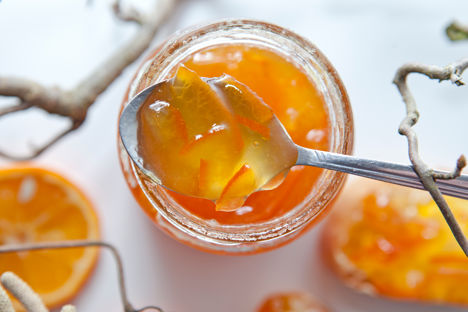
Seville oranges: the key to the world's most famous marmalade
Seville’s famous oranges are bitter, fragrant and truly unique. They’re also responsible for one of our most beloved pantry staples – marmalade. We take a closer look at the symbol of Seville, how it’s used and why its marmalade is much more than a breakfast spread.
Seville oranges: the key to the world's most famous marmalade
Seville’s famous oranges are bitter, fragrant and truly unique. They’re also responsible for one of our most beloved pantry staples – marmalade. We take a closer look at the symbol of Seville, how it’s used and why its marmalade is much more than a breakfast spread.
Wander through Seville’s sunny streets and squares and you’ll soon find yourself surrounded by bursts of bright orange. The city’s eponymous citrus is everywhere, at the heart of its home both geographically and culturally; every year, three million tourists visit to eat Seville’s food and spot some of the 30,000 orange trees dotted around the city. In short, the bitter orange is an iconic symbol of Seville. However, although they look enticing, Seville oranges are usually too tart to eat straight from the tree – instead, they are more commonly used in sauces, marinades and drinks and their blossom in fragrant oils, but they are best-known for the bitter-sweet marmalade that can be found in homes up and down the country.
Let’s rewind for a second. Seville oranges, also known as sour or bitter oranges, aren’t actually native to Spain; they’re originally from Southeast Asia, but were brought to the country by the Moors in the tenth century. In southern Spain’s hot and dry climate, the oranges flourished, and soon became a common sight across the region. They have a notably short season and are primarily harvested from the end of December until February. Unlike the sweet oranges we tend to enjoy fresh, Seville oranges are known for their thick, bumpy peel and bitterness – while that makes them less appetising as a snack, it’s what makes them perfect for cooking; their deep flavour is fantastic with meat (they were commonly used in early recipes for duck à l'orange), as well as in liqueurs like Cointreau and citrusy cocktails and cordials.
Their most famous use, though, is in marmalade. Our love affair with marmalade dates back centuries – it’s said to have been first brought here from Portugal during Tudor times, with the word evolving from marmelada, the Portuguese term for a quince paste. The orange marmalade we know and love is said to have first come into being in the eighteenth century in Scotland, when a grocer named James Keiller bought a batch of Seville oranges from a Spanish boat in Dundee harbour. The fruits gave the marmalade a bitter-sweet complexity which soon proved a hit, and the James Keiller & Son brand became iconic throughout the eighteenth and nineteenth centuries. With countless other versions having been created since, Seville orange marmalade is a breakfast staple in the UK, slathered onto toast and crumpets, but used more widely in cooking too (you can see our recipes using marmalade here). Marmalade producer La Vieja Fábrica understands its potential better than most – it makes Seville orange marmalade using techniques and recipes that have been passed down from generation to generation.
They’ll tell you that making delicious Seville orange marmalade is all about the quality of ingredients. No other citrus will do, and the oranges must be captured at their peak to ensure their characteristic depth of flavour and vibrancy. La Vieja Fábrica chooses only the finest Seville oranges and focuses on preserving the flavour of the fruit – it cooks its marmalade in small batches, doing so slowly and over lower temperatures to ensure the bitter, fragrant notes come through in every bite. When it comes to making marmalade at home, it's a relatively simple process – Seville oranges are halved and juiced, the pith, pips and pulp separated and put into a muslin cloth (these contain high levels of pectin, which helps marmalade set) and the skins are thinly-sliced. Everything goes into a pan with water and the juice, and is simmered with sugar until thick. Once it’s cooled and set, it’s ready to go. And although traditional Seville marmalade contains delicate slices of peel, there are other takes – La Vieja Fábrica, for example, also makes thick cut and peel-free varieties, as well as another blended with lemon.
While we’re happy with a thick layer of glossy marmalade on toast, there’s much more to it than that. Add dollops of sweet amber to meringue tarts or weave them into bread and butter pudding – or if you can’t get enough of sweet-meets-savoury, level up your onion chutney with a spoonful of marmalade (which you can then pair with everything from pheasant to sausages), or make an amazing glaze for chicken kebabs; we’ve served ours with a shaved fennel salad and olive salsa. Speaking of glazing, Seville orange marmalade is the perfect partner for salty gammon, duck, venison or pork.
Seville oranges might not fit the mould of a typically sweet fruit, but their bitter notes have long been rightly recognised as something to be celebrated. Seville’s famous citrus is not only a beautiful part of its city, but also responsible for complexity and depth in all sorts of recipes. Most importantly though, it’s the key to our beloved marmalade.


